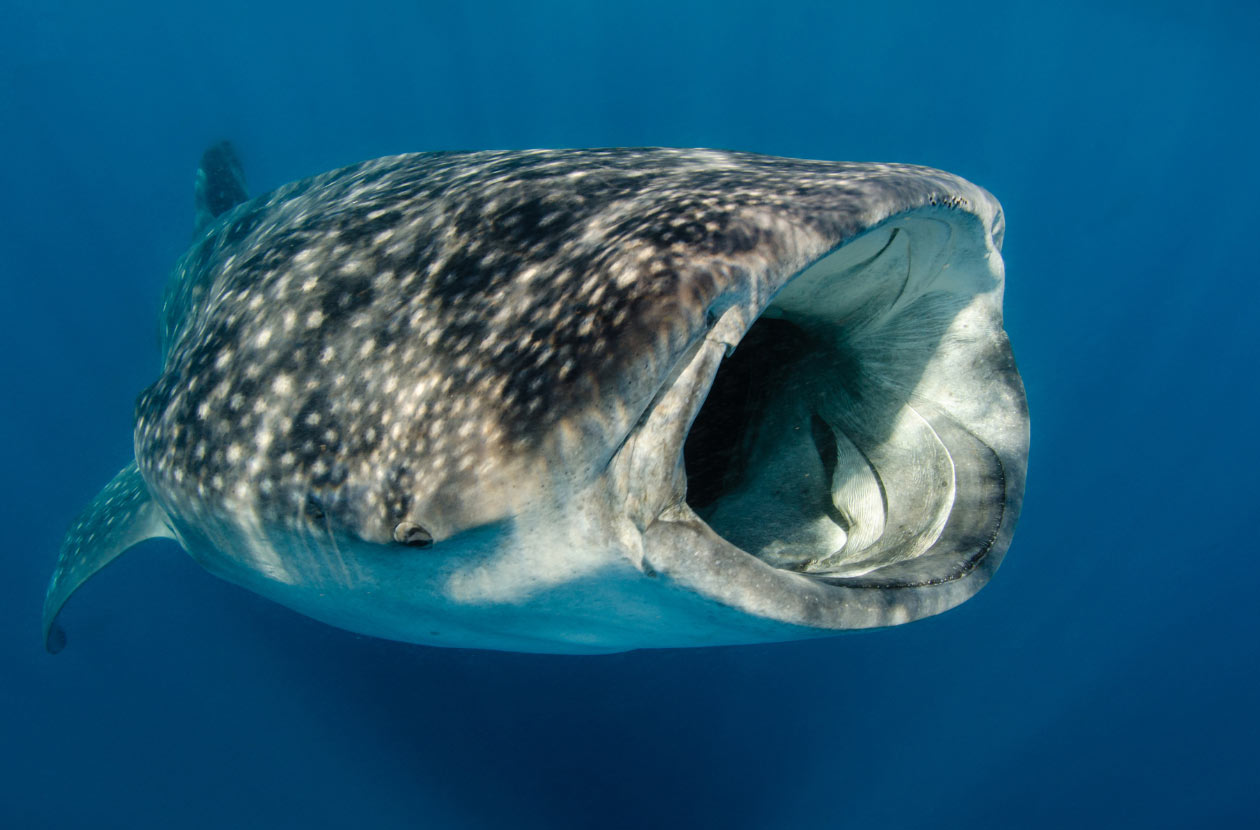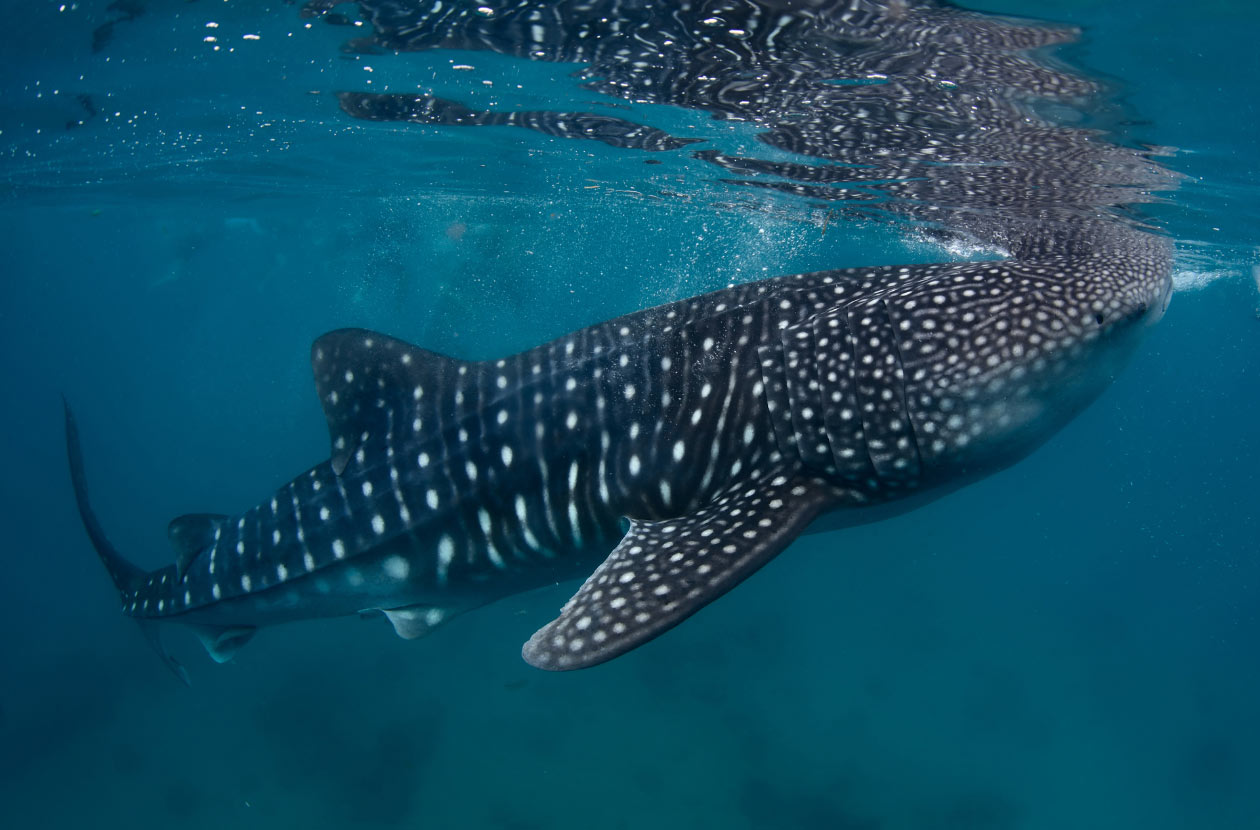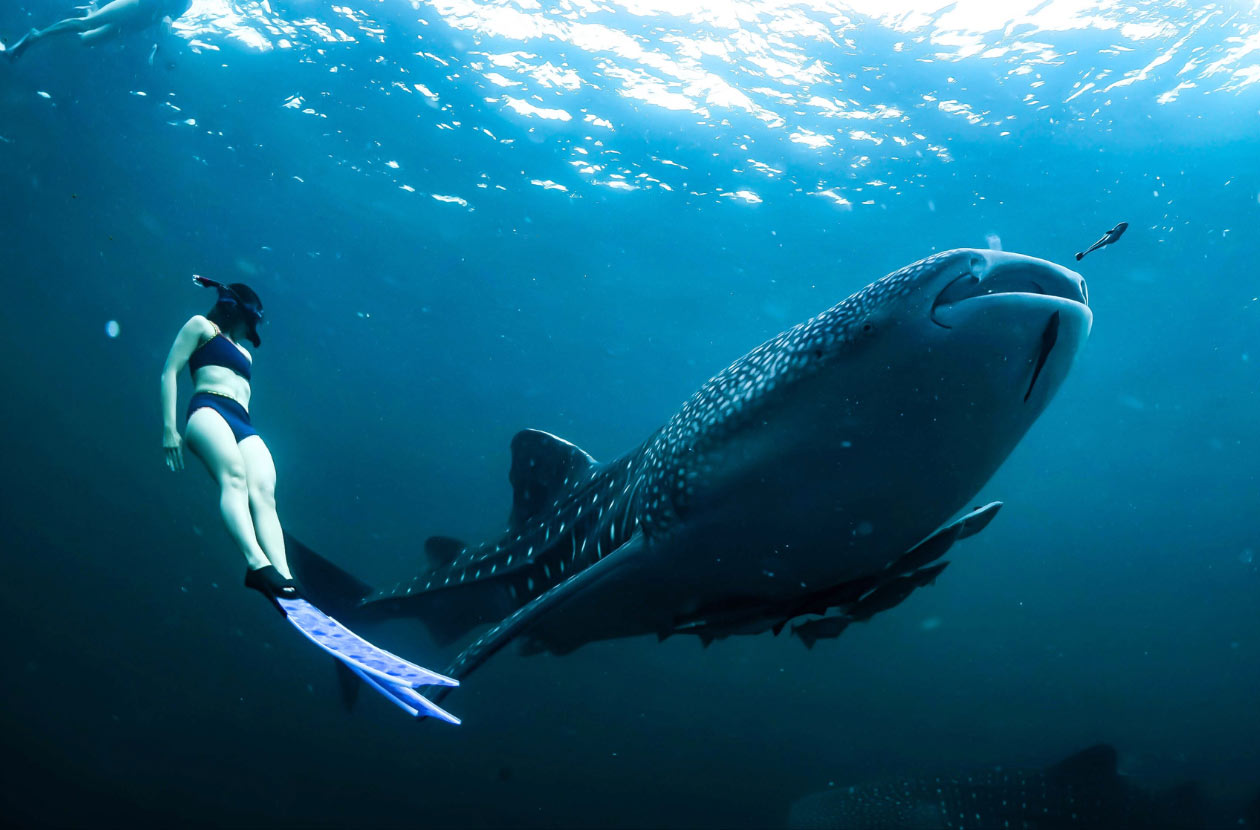Whale sharks are fascinating creatures that inhabit the world’s oceans. With their enormous size and gentle nature, they have captured the curiosity and awe of people around the globe. In this article, we will explore some interesting facts about whale sharks, shedding light on their unique characteristics, behavior, and conservation status.
Table of Contents
Facts About Whale Sharks
Whale sharks (Rhincodon typus) are the largest known fish species in the world, belonging to the family Rhincodontidae. Despite their name, these magnificent creatures are not whales but rather sharks, and they have captured the attention of scientists, divers, and nature enthusiasts alike. I assure you that meeting them during the dive is probably the biggest attraction I have experienced. During my two-year stay in Thailand I had the opportunity to be at arm’s length with them many times.

Physical Appearance and Size
These animals are truly impressive in terms of their physical characteristics. They have a distinctive appearance with a wide, flattened head and a mouth that can span up to 1.5 meters wide. The upper body of a whale shark is covered in a unique pattern of white spots and stripes, which acts as a form of identification, much like a human fingerprint. In terms of size, whale sharks can reach astonishing lengths of up to 40 feet (12 meters) or more. Some individuals have been reported to weigh over 20 tons, making them larger than many dinosaur species.
Migration Patterns: Traveling the Seas
These huge fish are known for their impressive migratory patterns. They often travel long distances in search of food, warmer waters, or suitable breeding grounds. These migrations can span thousands of miles, and whale sharks have been recorded traveling between different ocean basins.
Their movement patterns depend on various factors, including water temperature, food availability, and reproductive needs. Tracking studies have revealed that some whale sharks return to the same locations year after year, highlighting the importance of conservation efforts in these areas.
Social Behavior: Solitary Giants
While whale sharks are typically solitary creatures, they do occasionally exhibit social behavior. During certain times of the year, aggregations of whale sharks can form in areas with abundant food sources. These gatherings provide a unique opportunity for scientists and divers to observe and study these magnificent animals.
Research suggests that these aggregations may serve various purposes, including mating opportunities, cooperation in locating food, or even social interactions. However, much remains to be discovered about their social behavior due to the challenges of studying these elusive giants in their vast ocean habitats.
Reproduction and Life Cycle
Whale sharks are ovoviviparous, meaning that the embryos develop inside eggs within the mother’s body until they hatch. The gestation period is estimated to be around 9 months, and once the eggs hatch, the young are born live.
Newborn measure around 21-25 inches (55-65 cm) in length and are already fully capable of swimming and feeding. As they grow, they undergo a remarkable transformation, gradually developing the distinct characteristics and size of adult one.
How long do whale sharks live?
Whale sharks are known to have a relatively long lifespan compared to many other fish species. Researchers estimate that these majestic creatures can live up to 70 years in the wild. However, due to their elusive nature and the challenges of studying them in their vast ocean habitats, determining their exact lifespan can be challenging.
Feeding Habits: Filter-Feeding Marvels
One of the most fascinating aspects of whale sharks is their feeding behavior. They are filter feeders, meaning they primarily consume plankton, krill, and small fish. Despite their enormous size, their diet consists of tiny organisms that they filter from the water using their gill rakers. To feed, they swim slowly near the water’s surface with their mouths wide open, creating a vortex that draws in food. This unique feeding strategy allows them to sustain their massive size while consuming minuscule prey.

Conservation Status: Protecting a Vulnerable Species
They are classified as a vulnerable species on the IUCN Red List of Threatened Species. Despite their immense size and strength, they face various threats, primarily due to human activities. These threats include illegal fishing, boat strikes, habitat degradation, and entanglement in fishing nets.
Conservation efforts are crucial to protect whale sharks and their habitats. Initiatives such as marine protected areas, fishing regulations, and public awareness campaigns play a significant role in preserving these gentle giants for future generations.
Do whale sharks have any natural predators?
Whale sharks are generally considered to have no natural predators. While there have been rare instances where young were found in the stomachs of marlin and white sharks, it is important to note that these cases are exceptions rather than the norm. As baby whale sharks, they may be vulnerable to predation by various marine predators. However, as they grow rapidly and develop their distinct characteristics, including thick skin that can measure 5 to 6 inches in certain areas, they become less appealing targets for predators. The formidable thickness of their skin acts as a deterrent, as few predators would attempt to bite through it in order to consume a whale shark. Therefore, the overall consensus is that the whale shark, with its impressive size and protective attributes, lacks natural predators in the vast oceanic ecosystem.
The Importance of Ecotourism
Whale shark tourism has become increasingly popular in many coastal regions around the world. Responsible ecotourism can provide economic benefits to local communities while promoting the conservation of these magnificent creatures.
When participating in whale shark tourism, it is important to choose operators that prioritize the well-being of the animals and follow ethical guidelines. Respectful interactions, such as maintaining a safe distance and not touching or disturbing the sharks, help ensure the sustainability of this form of tourism.
Are whale sharks found in all oceans?
They are found in various warm tropical and subtropical waters around the world. While they have a wide distribution, they are not typically found in all oceans. These gentle giants are known to inhabit regions such as the Indian Ocean, the Pacific Ocean, the Atlantic Ocean, and the Arabian Sea.
Some notable hotspots for whale shark sightings include popular dive destinations like the Maldives, Mexico’s Yucatan Peninsula, the Philippines, Mozambique, and the Seychelles. However, it’s important to note that while these regions are known for frequent whale shark encounters, the presence of these magnificent creatures can still be unpredictable and influenced by environmental conditions.

The Role of Research and Education
Ongoing research and education initiatives are vital for understanding whale sharks better and implementing effective conservation strategies. Scientists and conservationists study their behavior, migration patterns, and genetics to gain insights into their population dynamics and overall health.
Educational programs and public awareness campaigns play a crucial role in promoting conservation. By raising awareness about the importance of protecting whale sharks and their habitats, we can foster a sense of stewardship among individuals and communities worldwide.
How do researchers track their movements?
Researchers employ various methods to track the movements of whale sharks and gain insights into their behavior and migration patterns. These tracking techniques provide valuable data for understanding their habitat preferences, migration routes, and population dynamics. These tracking methods, combined with data from satellite imagery, oceanographic models, and citizen science efforts, contribute to a comprehensive understanding of the movements and ecology of whale sharks. By studying their behaviors and migration patterns, researchers can propose effective conservation measures and advocate for the protection of these magnificent creatures.
Captivity Concerns: Whale Sharks in Aquariums
The debate around keeping whale sharks in captivity is a contentious issue. While aquariums provide an opportunity for people to see these majestic creatures up close, concerns have been raised about the ethical implications and the welfare of captive individuals.
Whale sharks have complex needs and require vast ocean habitats to thrive. The challenges of replicating their natural environment in captivity make it difficult to ensure their well-being. As a result, many conservation organizations advocate against keeping them in aquariums and instead focus on supporting initiatives that protect them in the wild.
Can you swim with whale sharks?
Yes, swimming with whale sharks is a popular and awe-inspiring activity in certain locations around the world. These gentle giants attract a significant amount of attention from tourists and nature enthusiasts who seek the opportunity to have a close encounter with these magnificent creatures. Several destinations, particularly in areas where whale sharks are known to frequent, offer regulated and responsible swimming experiences with these majestic animals.
These encounters often take place in locations where the presence of whale sharks is reliably observed and where guidelines are in place to ensure the safety and well-being of both the sharks and the participants. However, it is worth noting that some countries such as Costa Rica, for example, prohibit swimming with whales by law. And while the ban applies to humback whales, it’s a good idea to familiarize yourself with local regulations before you get into trouble.

Myths and Misconceptions
Several myths and misconceptions surround whale sharks. One common myth is that they are dangerous or aggressive towards humans. In reality, whale sharks are gentle creatures and pose no significant threat to humans. Swimming alongside them can be a memorable and awe-inspiring experience.
Another misconception is that whale sharks are whales. As mentioned earlier, they are, in fact, the largest known species of fish. These misconceptions highlight the importance of education and accurate information to dispel myths and foster a deeper understanding of these magnificent creatures.
Whale sharks – let’s recap
Whale sharks are awe-inspiring creatures that deserve our admiration and protection. Their immense size, filter-feeding behavior, and migratory patterns make them unique among marine species. However, they face numerous threats due to human activities.
By implementing effective conservation measures, supporting responsible tourism, and raising awareness, we can contribute to the preservation of whale sharks and their habitats. Appreciating these gentle giants and their ecological significance will ensure a brighter future for both the species and the world’s oceans.






